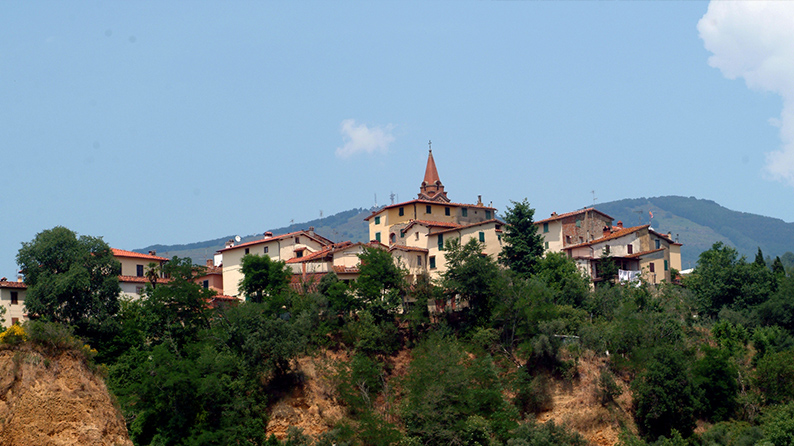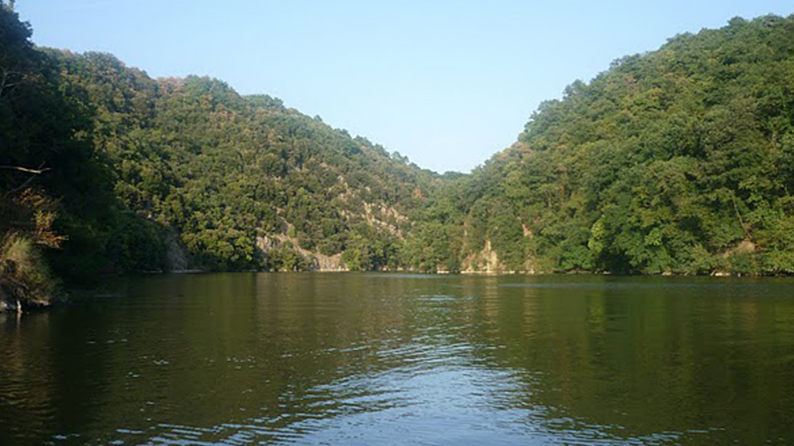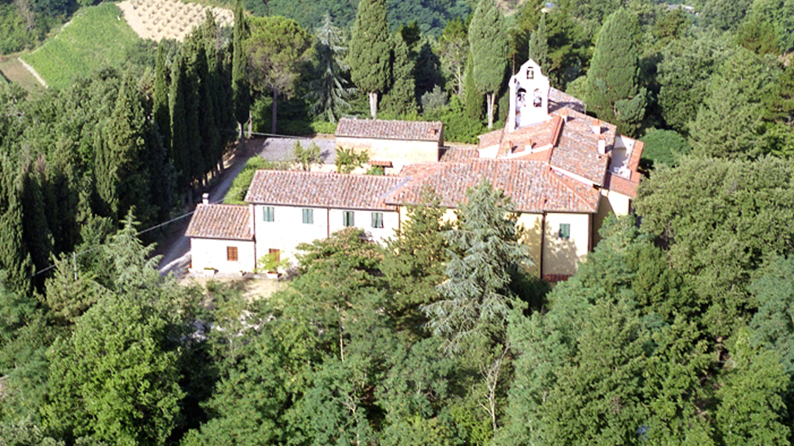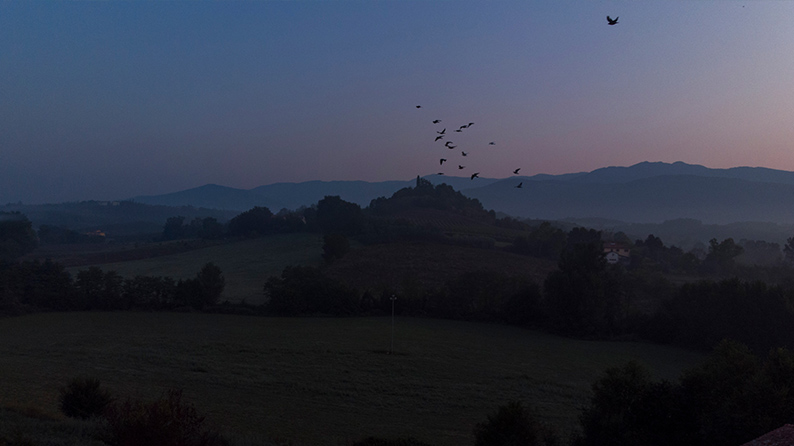Terranuova Bracciolini
The villages of the Balze

Near Penna, you can take a road called “Cave Road”, which takes us right behind the charming landscape of the Balze and offers a fascinating view from below.From there you can reach all the small hilly villages developed in this area, like the feudal castles built along the route of Cassia Vetus. Montemarciano: ancient fief propriety of the Pazzi family, it was destroyed by the Florentine in 1288, and only two gates remain (the Porta Campana and the so-called “Etruscan arch”).
Close to Montemarciano, the Oratory of Our Lady of Graces, with a fresco of the XV century, initially considered a youthful work by Masaccio. The following detours – always on the right – lead to the Villa di Poggitazzi, (with farms, olive presses and stately palaces) and then to Persignano and Piantravigne, two splendid terraces on the panorama of the Balze, with hamlets perched on rocky spurs.
They, too, were small castles subjected to the supremacy of the Pazzi. A family member, Carlino, is remembered by Dante in a Canto of Inferno ( XXXII, 69).
Close to Montemarciano, the Oratory of Our Lady of Graces, with a fresco of the XV century, initially considered a youthful work by Masaccio. The following detours – always on the right – lead to the Villa di Poggitazzi, (with farms, olive presses and stately palaces) and then to Persignano and Piantravigne, two splendid terraces on the panorama of the Balze, with hamlets perched on rocky spurs.
They, too, were small castles subjected to the supremacy of the Pazzi. A family member, Carlino, is remembered by Dante in a Canto of Inferno ( XXXII, 69).
The Hell Valley

The hell valley is a surprising site, located where you would least expect it to be, by the highway and near the railway track , along the course of the Arno River. Here you’ll unexpectedly find a couple dozen humid hectare area populated, in certain seasons of the year ,by flocks of herons, egrets, black-winged stilts and other migratory species.
The Oasi Lake of Bandella is due to the construction of the dam in 1956 for the purpose of producing hydroelectric power, the dam created a reservoir where water , stored at a given height transformed the valley into a lake with a progressive rewilding. Today it is an area which needs protection and a certain control as it is an environment rich in biodiversity. The site, with the adjacent area- 500 hectares surrounded by thick oak woods- is designated a Nature Reserve.
In the quietness you can see white and gray herons, great cormorants, common kingfishers, typical shrikes, mallards; while up in the sky – looking for smaller prays- you can see red kites, kestrels, common buzzards and western marsh harriers.
Nearby, there are many paths through the woods and the countryside, and in the flowering season you can find so many varieties of wild orchids.
All around the area it is easy to find herds of roe deer, wild boars, crested porcupines, red foxes, as well as a very rare type of salamander called spectacled salamander.
The Oasi Lake of Bandella is due to the construction of the dam in 1956 for the purpose of producing hydroelectric power, the dam created a reservoir where water , stored at a given height transformed the valley into a lake with a progressive rewilding. Today it is an area which needs protection and a certain control as it is an environment rich in biodiversity. The site, with the adjacent area- 500 hectares surrounded by thick oak woods- is designated a Nature Reserve.
In the quietness you can see white and gray herons, great cormorants, common kingfishers, typical shrikes, mallards; while up in the sky – looking for smaller prays- you can see red kites, kestrels, common buzzards and western marsh harriers.
Nearby, there are many paths through the woods and the countryside, and in the flowering season you can find so many varieties of wild orchids.
All around the area it is easy to find herds of roe deer, wild boars, crested porcupines, red foxes, as well as a very rare type of salamander called spectacled salamander.
Nearby Terranuova

Just outside Terranuova, on a hill overlooking the Balze, we find the convent of Ganghereto. According to tradition, it was built right where St. Francis would have flowed a source of water. Nearby we find the hamlet of Tasso, a small castle of probable Longobard origin, in the middle of a landscape of clay hummocks and sedimentary rocks, rich in fossils and known by geologists as “sands of Tasso”. Still in the surroundings of Terranuova, the Villas (once “castle of the Terraio”, populous walled village); Pernina (of medieval origin, with a seventeenth-century church surrounded by cypresses, on a quiet and panoramic hill); and finally Penna Alta, on top of a rock spur, which has maintained the structure of the ancient medieval fortified village.
Val d’Ascione

A highly recommended route (also by bicycle) is that of the Ascione Valley, starting from Ganghereto: about ten kilometers through cultivated hills that alternate with meadows, oaks, poplars, alders and bushes of brooms and heathers. Along the way, you will find evidence of rural architecture: farmhouses, barns, tobacconists, manor villas.
This is the cheese road, where you can buy pecorino, ricotta and raveggiolo. On the left, a series of hairpin bends lead to the ancient village of Cicogna, (near the Villa,it is worth noting an important historical garden, privately owned); on the right, and a little further on, you climb towards Castiglion Ubertini and Monticello, small rural agglomerations dating back to the fourteenth century, in a well maintained countryside with panoramic views.
Continuing the Ascione road, we can deviate to Traiana (settlement of Roman origin, born near the route of the Cassia Vetus; the current village developed, later, as a market of the castle; then you can find Campogialli, Ghibelline fief of the powerful Pazzi family, which retains the appearance of the fortified village, with picturesque alleys in the historic center. The church of Santa Maria in Campo Arsiccio is located just outside the town. The interior, a single nave, preserves an interesting cycle of frescoes ( thirteen and fourteen centuries ) by authors still unknown.
This is the cheese road, where you can buy pecorino, ricotta and raveggiolo. On the left, a series of hairpin bends lead to the ancient village of Cicogna, (near the Villa,it is worth noting an important historical garden, privately owned); on the right, and a little further on, you climb towards Castiglion Ubertini and Monticello, small rural agglomerations dating back to the fourteenth century, in a well maintained countryside with panoramic views.
Continuing the Ascione road, we can deviate to Traiana (settlement of Roman origin, born near the route of the Cassia Vetus; the current village developed, later, as a market of the castle; then you can find Campogialli, Ghibelline fief of the powerful Pazzi family, which retains the appearance of the fortified village, with picturesque alleys in the historic center. The church of Santa Maria in Campo Arsiccio is located just outside the town. The interior, a single nave, preserves an interesting cycle of frescoes ( thirteen and fourteen centuries ) by authors still unknown.
